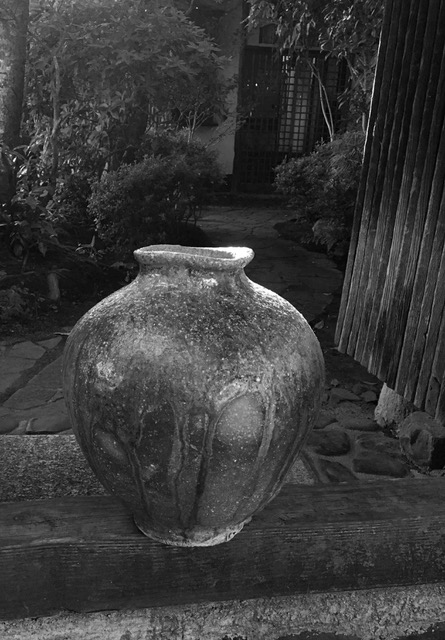One of the pieces in the Second WiK Anthology (Echoes, 2017) was by Robert Yellin, international expert on Japanese pottery and owner of the Yakimono Gallery. The following piece is an extract only; the full article is in Echoes: Writers in Kyoto Anthology, which can be obtained in print or Kindle ebook versions through amazon. Following this general introduction, Robert goes on to describe three of his favourite pieces (one of which is the Iga flask to which he refers). An indication of his eye for beauty can be seen in the striking photographs that he has given us permission to reproduce below…
For an account of Robert’s talk for Writers in Kyoto, see here.
(The 2018 WiK Anthology is expected out in June.)
****************
Drinking saké in Japan is an art when done with the right vessels. The history of saké vessels—collectively called shuki in Japanese—dates back millenniums and the variety of shuki found throughout Japan is as varied as there are clouds in the sky. For me, collecting shuki was my introduction into the Japanese pottery world as a young twenty-something in 1984 who couldn’t afford an expensive imported California Cabernet Sauvignon and so I thought better to go local, and that of course meant saké.
Almost all potters in Japan make shuki and they are avidly collected, often the first items to sell-out at exhibitions. Some of the earliest pieces I bought are shown here and have taught me quite a lot about Japanese history, regional styles, the joy of functional art, and of course the immense pleasure that comes with using fine vessels at the table, something the Japanese call Yo-no-Bi or Beauty through Use.
Iga is one of Japan’s ancient high-fired unglazed stonewares named after the town it was made in, as often is the case for Japanese styles. [Take this] Iga tokkuri, or flask, by the celebrated potter Shiro Tsujimura. At first I didn’t ‘get it.’ Look, the neck is leaning, there’s grit all over it, the base has a fused bit of clay on it, the glazing is uneven! In most western traditions—and certainly at art schools—this would have been a failure piece, yet here in Japan it’s the epitome of good taste. The reason being we find nature and man working together without one wanting to totally control each other or the process, yet letting intuition, passion, experience, and letting go take over. Meaning the beauty of this Tsujimura tokkuri is of course the clay he dug, processed and formed, yet also his willingness to let the process also have a say in the outcome, in a sense what we might call the ‘Beauty of the Imperfect.’ Kind of like you and I.
.jpeg)


